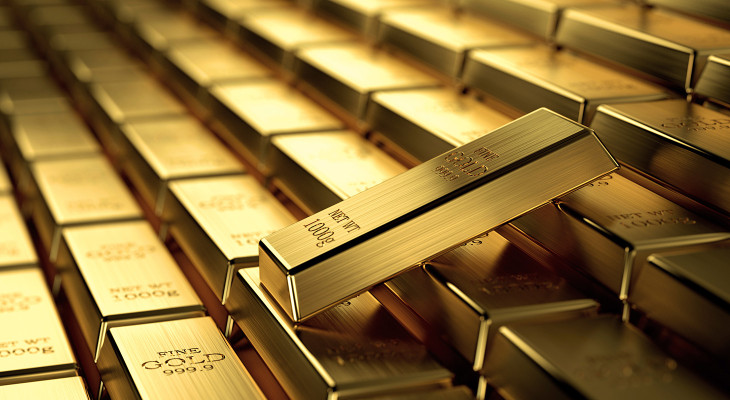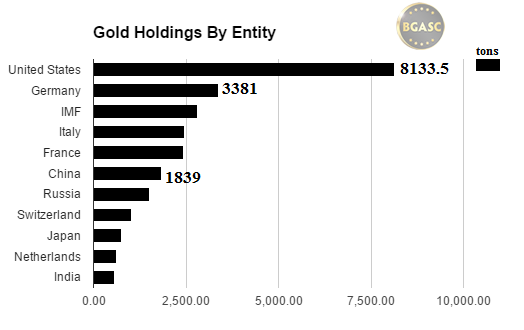
How Much Gold Does the United States Have?
United States Gold Reserves Are The Largest in The World
U.S. Gold Reserves
The United State lists its gold reserves at 8,133.50 tons. This number has not changed since 1971. During World War II, U.S. gold holdings peaked at over 20,000 tons. During and after World War II, many western European nations shipped their gold to New York Federal Reserve vaults in the United States for safe keeping. Over the past several years, some of the gold belonging to Germany and the Netherlands has been returned.
Where Did The United States Gold Come From?
Prior to 1933, the United States and other nations used gold coins for general circulation. Many countries also settled their international trade in gold. This required countries to hold gold in reserves for international payments. A country with net exports would build its gold reserves, while countries with net imports would deplete their gold reserves to pay for the imports.
In May 1933, by Excecutive Order, President Franklin Delano Roosevelt (FDR) ordered the return of all gold coins circulating in the United States and other gold bullion held by U.S. citizens. In exchange the US government paid then then market price of $20.67 an ounce. In January 1934, the US Congress passed the Gold Act that revalued gold at $35 an ounce.
Where is the United States Gold Held?
The bulk of the United States gold is held at Fort Knox in Kentucky. Approximately 4,600 tons of gold are currently held at the Fort Knox facility that was built in 1936 to store the nation’s gold horde that had grown substantially as a result of FDR gold confiscation order in 1933.
The remaining U.S. gold is held at the vaults of the New York Federal Reserve (approximately 400 tons) and at US Mint locations in Denver, Colorado (approximately 1,400 tons) and West Point, New York (approximately 1,700 tons).
The gold held at Fort Knox has not been audited since the 1950’s. American Gold Eagle coins are minted at the US Mint at West Point, New York.
How Much Gold Do Other Nations Have?

Do Gold Reserves Matter?
Not as much as they used to.
In 1944, in accordance with the Bretton Woods Agreements among nations, the United States Dollar was selected as the world’s reserve currency. Under the Bretton Woods Agreements of 1944, central banks of other countries holding United States Dollars could exchange them for gold. Since the United States had the most gold in the world and was a massive industrial power that ran a trade surplus, its gold holdings were usually increasing in the late 1940’s and 50’s.
By the mid to late 1960’s it became apparent to foreign central banks holding United States Dollar, that because the U.S. was engaging in massive deficit spending as part of the Space Race with the Soviet Union, under the Great Society of Lyndon Johnson and the Vietnam War, that perhaps the United States did not have enough gold to back the dollars they held. A “run” by foreign central banks led by the France and Germany resulted in Richard Nixon closing the gold window in August of 1971 – central banks would no longer be able to trade in their US dollars for gold. Since then, the U.S Dollar is no longer backed by gold and the entire global financial system trades currencies that are also unbacked.
A future financial system that may be brought about as a result of a reset of the current one, may involve gold in some form. For that reason, most central banks still hold gold as a reserve asset. Russia and China have added significant amounts of gold over the past five years, vaulting them into the top ten gold holding nations.
This article by BGASC is not, and should not be regarded as, investment advice or as a recommendation regarding any particular course of action.
